
Maramures: The Heart of Traditional Romania
Discover Maramures in Romania: A land of wooden churches, charming villages, and timeless traditions nestled amidst breathtaking natural beauty.
Maramures is a picturesque region in northern Romania, renowned for its stunning landscapes and deep-rooted traditions. This captivating area is like stepping back in time, where wooden churches, quaint villages, and rolling hills create an enchanting atmosphere. In Maramures, you can explore the region's famous wooden churches, which are UNESCO World Heritage Sites. These churches, with their tall spires and intricate carvings, are a testament to the skill and devotion of the local craftsmen. Maramures is also known for its vibrant folk culture. Visitors can witness traditional crafts such as weaving, pottery, and wood carving. The locals are very proud of their customs, and you might even get to see a traditional dance or listen to folk music during your stay. Nature lovers will find plenty to do in Maramures. The region is dotted with hiking trails that take you through lush forests and past clear streams. Don’t miss the Merry Cemetery in Sapanta, where colorful tombstones tell the life stories of those buried there in a unique and humorous way.
Local tips in Maramures
- Visit the wooden churches early in the morning to avoid crowds and get the best light for photography.
- Try to learn a few basic Romanian phrases; locals appreciate the effort and it can enhance your experience.
- Wear comfortable shoes for exploring the villages and hiking trails, as many paths are uneven and steep.
- Sample local dishes such as 'mămăligă' (cornmeal porridge) and 'ciorbă' (sour soup) for an authentic culinary experience.
- Check the local calendar for festivals and fairs to experience the vibrant folk culture of Maramures.
Maramures: The Heart of Traditional Romania
Maramures is a picturesque region in northern Romania, renowned for its stunning landscapes and deep-rooted traditions. This captivating area is like stepping back in time, where wooden churches, quaint villages, and rolling hills create an enchanting atmosphere. In Maramures, you can explore the region's famous wooden churches, which are UNESCO World Heritage Sites. These churches, with their tall spires and intricate carvings, are a testament to the skill and devotion of the local craftsmen. Maramures is also known for its vibrant folk culture. Visitors can witness traditional crafts such as weaving, pottery, and wood carving. The locals are very proud of their customs, and you might even get to see a traditional dance or listen to folk music during your stay. Nature lovers will find plenty to do in Maramures. The region is dotted with hiking trails that take you through lush forests and past clear streams. Don’t miss the Merry Cemetery in Sapanta, where colorful tombstones tell the life stories of those buried there in a unique and humorous way.
When is the best time to go to Maramures?
Iconic landmarks you can’t miss
Bârsana Monastery
Explore the breathtaking Bârsana Monastery, a UNESCO World Heritage site, and immerse yourself in Romania's rich spiritual and cultural heritage.

Păstrăvăria Alex, Mara
Experience the essence of Romanian cuisine at Păstrăvăria Alex, where fresh trout and traditional dishes await in a stunning countryside setting.
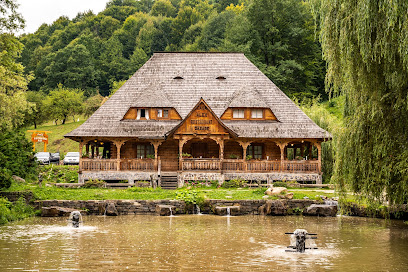
Mocănița Maramureș
Discover the breathtaking beauty and rich culture of Romania aboard the historic Mocănița Maramureș steam train, a journey through time.

Maramures Mountains Natural Park
Experience the enchanting landscapes and vibrant culture of Maramures Mountains Natural Park, a natural wonder in Romania perfect for every adventure seeker.

Peri-Săpânţa Monastery
Discover the breathtaking Peri-Săpânța Monastery, Romania's tallest wooden church, a UNESCO World Heritage site rich in culture and spirituality.

Maramureșean Village Museum
Explore the rich cultural heritage of Maramureș at the Maramureșean Village Museum, an open-air museum showcasing traditional architecture and lifestyle.
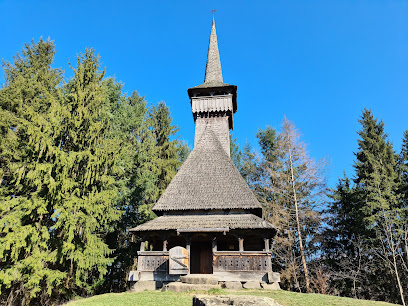
Centrul vechi
Discover the enchanting Centrul Vechi in Baia Mare, where rich history meets vibrant culture in a picturesque setting.

Saint Stephen Tower
Explore the historical charm and breathtaking views of Saint Stephen Tower, a must-visit landmark in Baia Mare, Romania.

Maramureșul
Discover the charm of Maramureșul, where traditional crafts meet modern shopping in a vibrant cultural hub.

The Merry Cemetery
Explore the Merry Cemetery in Săpânța, Romania, where vibrant crosses and humorous epitaphs celebrate life in a truly unique way.

Cuiul
Discover the rich cultural heritage of Sighetu Marmației at Cuiul, an iconic tourist attraction that offers historical insights and stunning architecture.

Pârtiile Icoana
Experience the thrill of skiing and the beauty of nature at Pârtiile Icoana, a premier ski resort in Cavnic, Romania.

Parcul Central
Explore the serene beauty of Parcul Central in Baia Mare, a state park perfect for relaxation, family outings, and enjoying nature's tranquility.

Sapanta Maramures
Experience the vibrant culture of Sapanta Maramures, home to the Merry Cemetery and exquisite handicrafts that celebrate Romanian traditions.

Cock's comb
Discover the breathtaking landscapes and unique geological formations of Cock's Comb, a premier hiking destination in Romania's Carpathian Mountains.

Unmissable attractions to see
Mocănița Maramureș
Discover the enchanting steam train journey of Mocănița Maramureș through the stunning landscapes of Vaser Valley, a must-visit for every traveler.

Queen Maria Municipal Park
Explore the natural beauty and cultural charm of Queen Maria Municipal Park, a serene escape in the heart of Baia Mare, Romania.

Mara Park
Explore the lush landscapes and cultural charm of Mara Park in Baia Mare, a perfect retreat for nature lovers and families alike.

Centrul vechi
Explore the enchanting streets of Centrul Vechi, Baia Mare's historic heart, where culture, cuisine, and charm intertwine in a captivating experience.

Saint Stephen Tower
Experience the breathtaking views and rich history at Saint Stephen Tower, a must-visit landmark in Baia Mare, Romania.
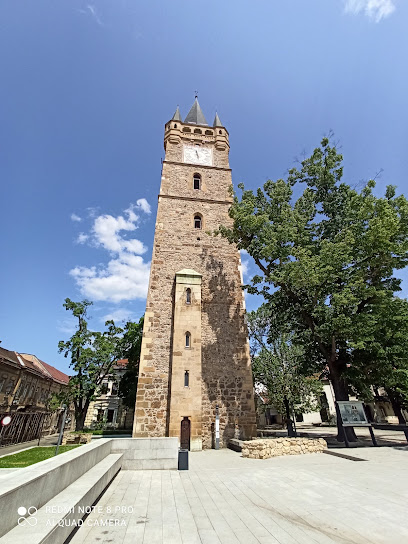
Museum of Mineralogy
Discover the breathtaking world of minerals at the Museum of Mineralogy in Baia Mare, a captivating journey through Earth's geological wonders.
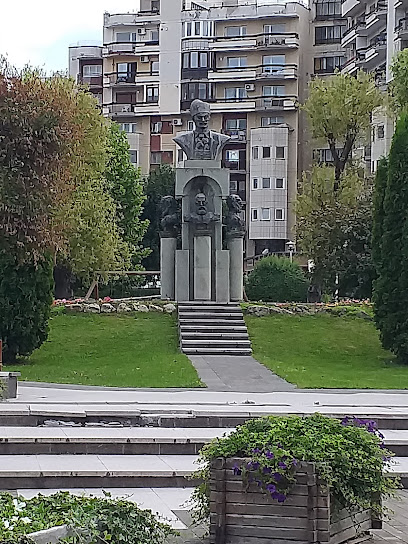
County Museum of Ethnography and Folk Art
Explore the County Museum of Ethnography and Folk Art in Baia Mare, where Romania's rich traditions and cultural heritage come to life through engaging exhibits.
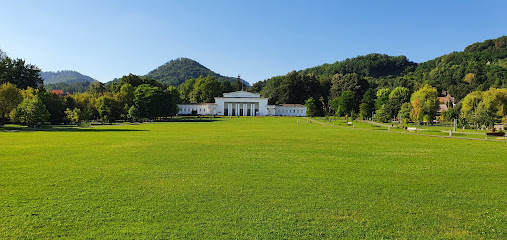
Pârtiile Icoana
Discover Pârtiile Icoana, a stunning ski resort in Romania offering thrilling slopes, breathtaking views, and cozy lodges for an unforgettable winter adventure.

Lacul Albastru
Experience the stunning beauty of Lacul Albastru, a serene lake in Romania known for its vibrant blue waters and picturesque landscapes.

Sapanta Maramures
Explore the enchanting Sapanta Maramures, where culture, craftsmanship, and the unique Merry Cemetery come together in a vibrant Romanian experience.

Cock's comb
Explore the breathtaking beauty of Cock's Comb, a scenic hiking destination in Romania, perfect for adventure seekers and nature lovers alike.

Butcher's Bastion
Explore the historic Butcher's Bastion, a gem of Baia Mare that showcases medieval architecture and captivating local history.

Crăpătura Zorilor
Discover the breathtaking landscapes and serene beauty of Crăpătura Zorilor, a must-visit tourist attraction in the heart of Baia Sprie, Romania.

County Museum of History and Archeology Maramures
Explore the rich tapestry of history and archaeology at the County Museum of History and Archeology Maramures, a cultural gem in Baia Mare, Romania.
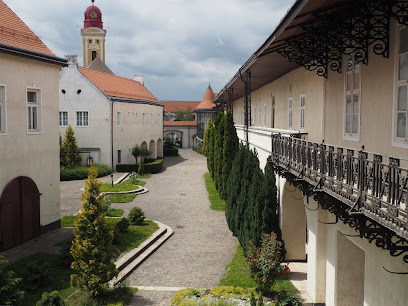
Luna Aventura Parc
Experience the ultimate adventure at Luna Aventura Parc in Negrești-Oaș, where thrilling outdoor activities meet stunning natural beauty.

Essential places to dine
Restaurant Millennium Baia Mare
Experience exquisite dining with breathtaking views at Restaurant Millennium in Baia Mare – a perfect blend of taste and scenery.
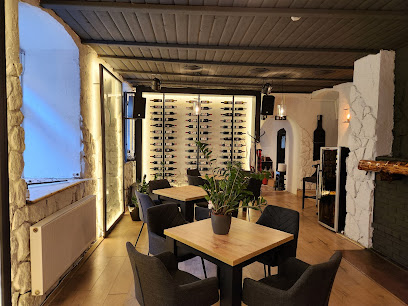
Casa Iurca de Călineşti
Discover authentic Romanian cuisine at Casa Iurca de Călineşti in Sighetu Marmației - where tradition meets culinary delight.

Barbarossa
Discover Barbarossa in Baia Mare – where authentic Romanian cuisine meets modern flair in a cozy atmosphere perfect for all diners.

Hanul Teilor
Discover the flavors of Romania at Hanul Teilor – a charming restaurant and event venue blending tradition with hospitality.

Castel Transilvania
Experience culinary excellence and luxurious hospitality at Castel Transilvania in Baia Mare - where every meal feels like royalty.

La Pălincie
Experience authentic Romanian cuisine at La Pălincie in Baia Mare - where tradition meets flavor.
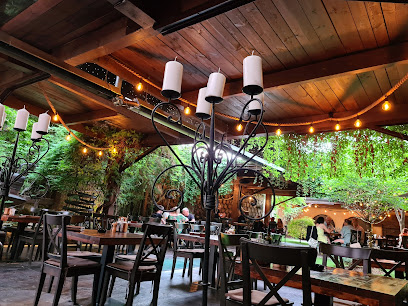
Hanu Lu Cobâlă
Experience authentic Romanian cuisine at Hanu Lu Cobâlă in Budești – where tradition meets flavor in every bite.

Butoiașu' cu Bere
Experience authentic Romanian cuisine at Butoiașu' cu Bere in Baia Mare - where tradition meets taste.
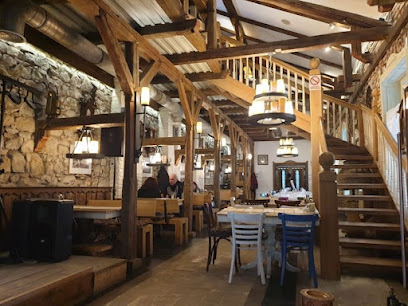
Crișan House
Discover authentic Romanian cuisine at Crișan House in Baia Mare - where tradition meets taste in a cozy setting.

Bastion
Discover authentic Romanian flavors at Bastion, where traditional cuisine meets modern dining in the heart of Baia Mare.

La Creperie
Experience the best crepes in Romania at La Creperie - where flavor meets tradition in Baia Mare's vibrant dining scene.

Hanul Tentea - Pasul Gutai
Discover authentic Romanian cuisine at Hanul Tentea - Pasul Gutai, where culinary traditions meet serene surroundings in Baia Sprie.

La Fontana
Experience authentic Italian cuisine at La Fontana in Baia Mare - where every meal is a celebration of flavor and hospitality.

Restaurant Traditional Casa lu' Dochia - Breb
Experience authentic Romanian cuisine in Breb at Restaurant Traditional Casa lu' Dochia - where tradition meets flavor in every dish.

Restaurant Maya's Events 3***
Experience authentic Romanian cuisine in a beautiful setting at Restaurant Maya's Events in Baia Sprie.

Markets, malls and hidden boutiques
Maramureșul
Explore Maramureșul: A Shopping Haven Blending Tradition and Modernity in Baia Mare.
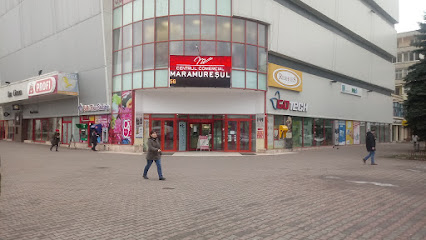
Baia Mare Shopping Park
Explore Baia Mare Shopping Park for an unforgettable shopping experience in Romania, featuring diverse retail options, dining, and family-friendly entertainment.

SOUVENIRS - CADOURI
Explore the charm of Baia Mare at Souvenirs - Cadouri, your go-to gift shop for unique local crafts and chinaware that capture the essence of Romania.

Ambiance deco
Discover unique souvenirs and local crafts at Ambiance Deco, Baia Mare's charming gift shop filled with treasures that tell a story.

MyHousing Artizanat
Explore MyHousing Artizanat: A gift shop in Baia Mare offering handcrafted pottery, wicker items, and unique gifts that celebrate local craftsmanship.

La Moraru Magazin Alimentar
Explore authentic Romanian flavors and local treasures at La Moraru Magazin Alimentar in the heart of Cavnic.

La Doi Pași
Explore the unique treasures of La Doi Pași, a charming store in Baia Mare offering authentic Romanian crafts and delightful local products.
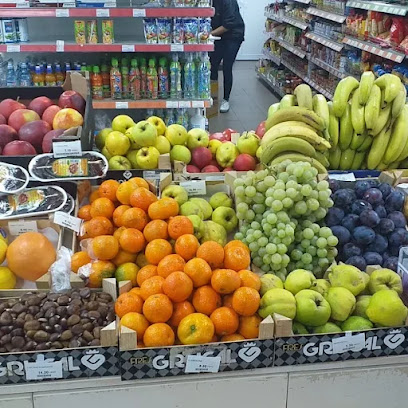
CREEPS
Discover CREEPS in Baia Mare for unique handcrafted gifts, ceramics, and art that embody the spirit of Romania's rich artistic culture.

PASTEL, magazin de cadouri si suveniruri
Explore PASTEL, a charming gift shop in Baia Mare offering unique souvenirs and local handicrafts that capture the essence of Romania.

Art Butik
Explore Art Butik, a charming gift shop that showcases unique local craftsmanship and artistry, perfect for finding memorable souvenirs.

Javu Atelier
Explore Javu Atelier in Baia Mare for a unique shopping experience filled with handmade gifts, artisanal candles, and local crafts.

Artizan HUB
Discover the creativity of Baia Mare at Artizan HUB, the ultimate destination for unique gifts, local crafts, and artistic inspiration.

Cadoul fără nume
Explore Baia Mare's Cadoul fără nume for unique gifts and local crafts that capture the essence of Romanian culture and artistry.

Sticle Artizanale
Discover unique handcrafted treasures at Sticle Artizanale, a charming gift shop in Cavnic showcasing the best of Romanian artistry.

Magazin Imbracaminte Second Hand - Textile House Romania
Explore the charm of Textile House Romania, a second-hand clothing store in Baia Mare, offering unique styles for eco-conscious fashion lovers.

Essential bars & hidden hideouts
Office Pub
Discover the lively ambiance of Office Pub in Baia Mare, where great drinks, delicious snacks, and friendly vibes await you.

Scottish Pub
Discover the flavors of Scotland in Baia Mare at the vibrant Scottish Pub, where tradition meets warm hospitality.
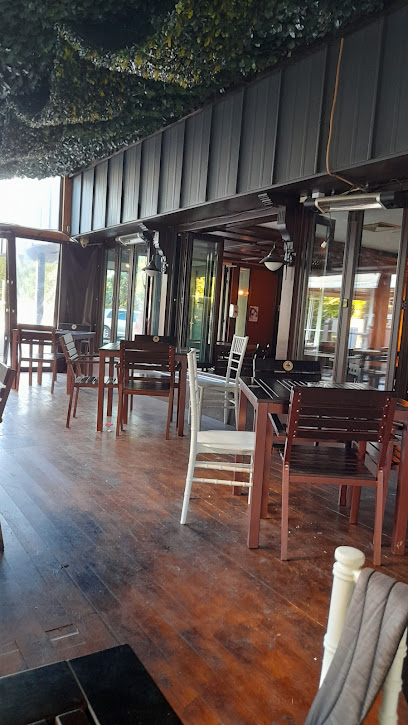
Sahara Pub
Discover the vibrant atmosphere of Sahara Pub in Baia Mare, where excellent drinks, delicious food, and a unique hookah experience await.

Old Pub
Discover Old Pub in Sighetu Marmației, where local flavors, warm hospitality, and a cozy atmosphere come together for an unforgettable experience.

Pick-up Narghila Baia Mare
Discover the vibrant nightlife of Baia Mare at Pick-up Narghila, a bar offering a unique atmosphere, delightful drinks, and a welcoming ambiance for all.

Shadows Rock Bar
Enjoy a lively atmosphere and affordable drinks at Shadows Rock Bar in Baia Mare, a perfect spot for relaxation and socializing.

Colonello
Discover the lively ambiance and diverse drink offerings at Colonello, Baia Mare's favorite bar for an unforgettable night out.
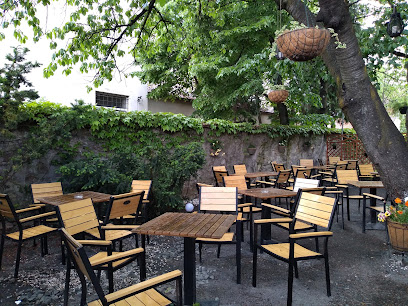
Chill Out
Discover Chill Out in Baia Mare - a stylish bar and café where relaxation meets vibrant social life, offering an inviting atmosphere and delightful drinks.

Vintage Bar
Experience the charm of Vintage Bar in Baia Mare, where cozy ambiance meets an extensive drink selection for memorable evenings.
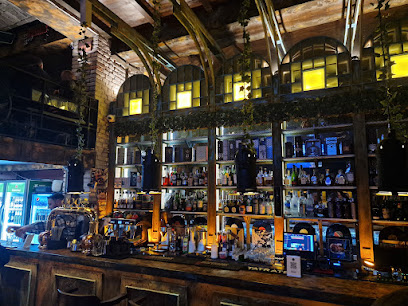
Terasa OJT
Experience the vibrant atmosphere of Terasa OJT, a charming bar in Baia Mare offering a diverse drink menu and a welcoming ambiance for all travelers.

Art Cafe Bar
Discover the vibrant ambiance of Art Cafe Bar in Baia Mare, where art and socializing blend perfectly with a variety of drinks and snacks.

Cafebar
Discover the charm of Cafebar in Baia Mare, where local flavors and cozy ambiance meet for an unforgettable experience.

Aliusha cafe bar srl
Discover the heart of Baia Mare at Aliusha Cafe Bar, where local culture meets delightful drinks and a warm atmosphere.

The Cellar - Wine shop & Wine bar
Discover exquisite wines and a cozy ambiance at The Cellar, the premier wine bar in Baia Mare, Romania.

Shake Pub
Experience the authentic vibe of Sighetu Marmației at Shake Pub, where locals gather to enjoy great drinks and a warm atmosphere.
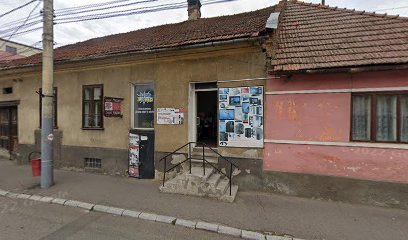
Local Phrases about Maramures
-
- HelloBună ziua
[boo-nuh zee-wah] - GoodbyeLa revedere
[lah reh-veh-deh-reh] - YesDa
[dah] - NoNu
[noo] - Please/You're welcomeTe rog
[teh rohg] - Thank youMulțumesc
[mool-tsoo-mesk] - Excuse me/SorryScuzați-mă
[skoo-zah-tsi muh] - How are you?Ce mai faci?
[cheh mye fahch?] - Fine. And you?Bine. Și tu?
[bee-neh. shee too?] - Do you speak English?Vorbești engleză?
[vor-beh-shtee ehn-gleh-zuh?] - I don't understandNu înțeleg
[noo uhn-tseh-lehg]
- HelloBună ziua
-
- I'd like to see the menu, pleaseAș dori să văd meniul, vă rog
[ush doh-ree suh vad meh-nyoohl, vuh rohg] - I don't eat meatNu mănânc carne
[noo muh-nuhnk kahr-neh] - Cheers!Noroc!
[noh-rohk] - I would like to pay, pleaseAș dori să plătesc, vă rog
[ush doh-ree suh pluh-tesk, vuh rohg]
- I'd like to see the menu, pleaseAș dori să văd meniul, vă rog
-
- Help!Ajutor!
[ah-yoo-tor] - Go away!Duceți-vă!
[doo-chetzi-vuh] - Call the Police!Sună la Poliție!
[soo-nuh lah poh-lee-tsee-eh] - Call a doctor!Sună un doctor!
[soo-nuh oon dok-tor] - I'm lostM-am rătăcit
[mahm ruh-tuh-cheet] - I'm illSunt bolnav
[soont bohl-nav]
- Help!Ajutor!
-
- I'd like to buy...Aș dori să cumpăr...
[ush doh-ree suh koom-par] - I'm just lookingDoar mă uit
[doh-ar muh ooh-eet] - How much is it?Cât costă?
[kaht kohs-tuh?] - That's too expensiveEste prea scump
[ehs-teh preh-ah skoomp] - Can you lower the price?Puteți să scădeați prețul?
[poo-teh-tsi suh skuh-deh-ahts prehtsool?]
- I'd like to buy...Aș dori să cumpăr...
-
- What time is it?Cât este ceasul?
[kaht eh-steh chyah-sool] - It's one o'clockEste ora unu
[ehs-teh oh-rah oon-oo] - Half past (10)O jumătate (la zece)
[oh joo-muh-ta-te (lah zeh-che)] - MorningDimineața
[dee-mee-neh-tsa] - AfternoonDupă-amiază
[doo-puh ah-mee-ah-zah] - EveningSeara
[seh-ah-rah] - YesterdayIeri
[yer] - TodayAstăzi
[ah-stuhz] - TomorrowMâine
[muh-ee-neh] - 1Unu
[oo-noo] - 2Doi
[doy] - 3Trei
[treh-ee] - 4Patru
[pa-troo] - 5Cinci
[chin-chee] - 6Șase
[shah-seh] - 7Șapte
[shahp-teh] - 8Opt
[opt] - 9Nouă
[noo-wuh] - 10Zece
[zeh-che]
- What time is it?Cât este ceasul?
-
- Where's a/the...?Unde este unul/o...
[oon-deh eh-steh oo-noohl/oh] - What's the address?Care este adresa?
[ka-reh eh-steh ah-dre-sah] - Can you show me (on the map)?Puteți să-mi arătați (pe hartă)?
[poo-teh-tsi suh-mi ah-rah-ta-tsi (peh har-tuh)] - When's the next (bus)?Când este următorul (autobuz)?
[kund eh-steh oor-muh-toh-rool (ow-toh-booze)] - A ticket (to ....)Un bilet (spre ...)
[oon by-let (spreh)]
- Where's a/the...?Unde este unul/o...
History of Maramures
-
Long before the region was known as Maramures, it was inhabited by the Dacians, an ancient people whose rich culture and robust fortresses dotted the landscape. Archaeological finds, such as pottery and tools, provide a glimpse into the lives of these early settlers. The Dacians played a significant role in the early history of Romania and left a lasting legacy that can still be felt in Maramures today.
-
During the Middle Ages, Maramures became an important border region of the Kingdom of Hungary. The area's strategic location and natural resources attracted various populations, including Romanians, Hungarians, and Saxons, who contributed to its cultural diversity. This period was marked by the construction of wooden churches and fortified structures that are now emblematic of Maramures.
-
The 16th and 17th centuries saw Maramures embroiled in the broader conflicts between the Ottoman Empire and the Kingdom of Hungary. Despite frequent Ottoman incursions, the local population maintained a fierce resistance. This era is characterized by tales of heroism and the fortification of villages, as well as the development of unique architectural styles in local churches and houses.
-
Following the decline of Ottoman power, Maramures fell under the influence of the Habsburg Monarchy and later became part of the Austro-Hungarian Empire. This period brought significant administrative and cultural changes, including the introduction of new agricultural techniques and the construction of impressive public buildings. The Habsburgs also promoted religious tolerance, which allowed for a flourishing of both Orthodox and Catholic traditions.
-
The aftermath of World War I brought significant political changes to Maramures. The 1918 Union with Romania was a pivotal moment, as the region was integrated into the Romanian state. This period saw a resurgence of Romanian cultural identity, with efforts to preserve local traditions and folklore. The union also led to economic and social reforms that reshaped the region's landscape.
-
During World War II, Maramures experienced occupation and significant upheaval. Following the war, the region fell under Soviet influence as part of Communist Romania. The Soviet era brought industrialization and collectivization, which had profound effects on the traditional agrarian lifestyle. However, it also led to the preservation of many cultural sites as symbols of national heritage.
-
The fall of Communism in 1989 marked a new chapter for Maramures. The region has since experienced a cultural and economic revival, with efforts to restore historical sites and promote tourism. Today, Maramures is celebrated for its well-preserved wooden churches, vibrant festivals, and rich folklore, making it a fascinating destination for travelers interested in history and culture.
Maramures Essentials
-
Maramures is located in the northern part of Romania, close to the borders with Ukraine and Hungary. The nearest international airports are Cluj-Napoca International Airport (CLJ) and Baia Mare Airport (BAY). From Cluj-Napoca, you can take a train or bus to Baia Mare or Sighetu Marmației, which are major towns in Maramures. The journey typically takes around 3 to 4 hours by road. Alternatively, you can rent a car and drive, which allows for more flexibility in exploring the region.
-
Within Maramures, public transportation options include buses and trains. Buses are the most common and connect major towns and villages. Trains are available but limited, mainly connecting to larger towns. Taxis are readily available and relatively inexpensive. Renting a car is a convenient option for exploring the remote villages and scenic routes at your own pace. Biking is also popular for short distances and offers a great way to enjoy the countryside.
-
The official currency in Romania is the Romanian Leu (RON). Credit cards are accepted in most hotels, restaurants, and shops in larger towns, but it is advisable to carry cash, especially in smaller establishments and rural areas. ATMs are available in major towns like Baia Mare and Sighetu Marmației, but it is wise to withdraw sufficient cash before heading to more remote areas.
-
Maramures is generally a safe destination for tourists. However, it is advisable to take standard precautions. Avoid walking alone at night in unfamiliar areas and keep an eye on your belongings in crowded places. There are no specific areas with high crime rates targeting tourists, but it is always best to stay vigilant and aware of your surroundings. Petty theft can occur, especially in crowded markets.
-
In case of emergency, dial 112 for immediate assistance. This number connects you to police, fire, and medical services. Baia Mare and Sighetu Marmației have hospitals and medical facilities. It is recommended to have travel insurance that covers medical emergencies. Pharmacies are available in towns where you can purchase over-the-counter medications.
-
Fashion: Do dress modestly, especially when visiting religious sites. Avoid wearing overly revealing clothing. Religion: Do respect local customs and traditions. Always cover your head when entering churches. Public Transport: Do be respectful and give up your seat to elderly passengers. Don’t eat or drink on public transport. Greetings: Do greet people with a handshake. A friendly nod or slight bow is also appreciated. Eating & Drinking: Do try local delicacies and accept food offerings graciously. Don’t refuse hospitality, as it is considered impolite.
-
To experience Maramures like a local, visit the local markets where you can buy fresh produce and traditional Romanian goods. Engage with locals, as they are often friendly and willing to share stories about the region's history and culture. Don’t miss visiting the Wooden Churches of Maramures, which are UNESCO World Heritage Sites. For a unique experience, take a ride on the Mocănița steam train through the Vaser Valley, offering breathtaking views of the Carpathian Mountains.
Trending Landmarks in Maramures
Nearby Cities to Maramures
-
Things To Do in Satu Mare
-
Things To Do in Cluj-Napoca
-
Things To Do in Mukachevo
-
Things To Do in Uzhhorod
-
Things To Do in Nyiregyhaza
-
Things To Do in Ivano-Frankivsk
-
Things To Do in Debrecen
-
Things To Do in Chernivtsi
-
Things To Do in Sighisoara
-
Things To Do in Suceava
-
Things To Do in Deva
-
Things To Do in Košice
-
Things To Do in Miskolc
-
Things To Do in Prešov
-
Things To Do in Lviv













